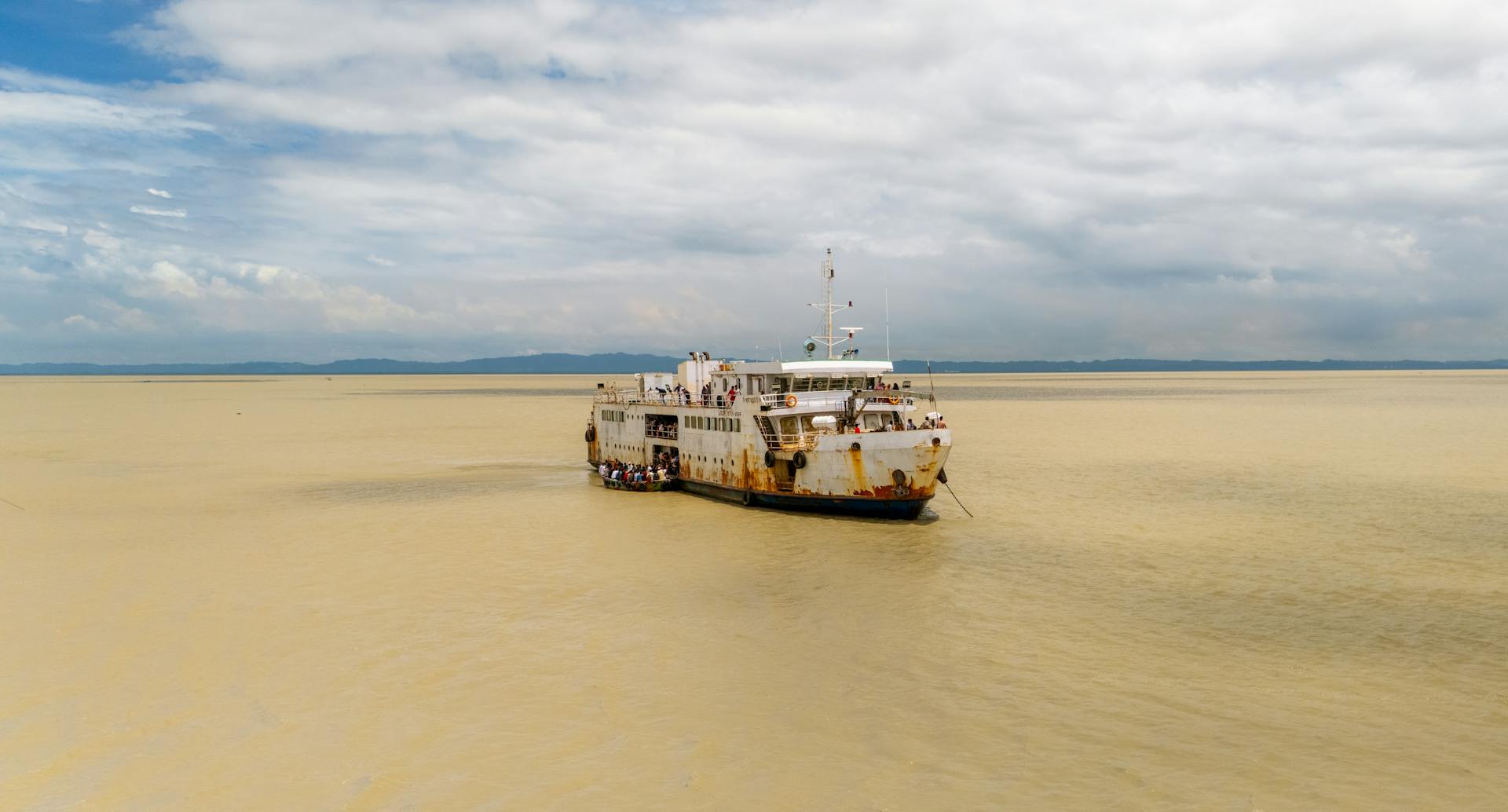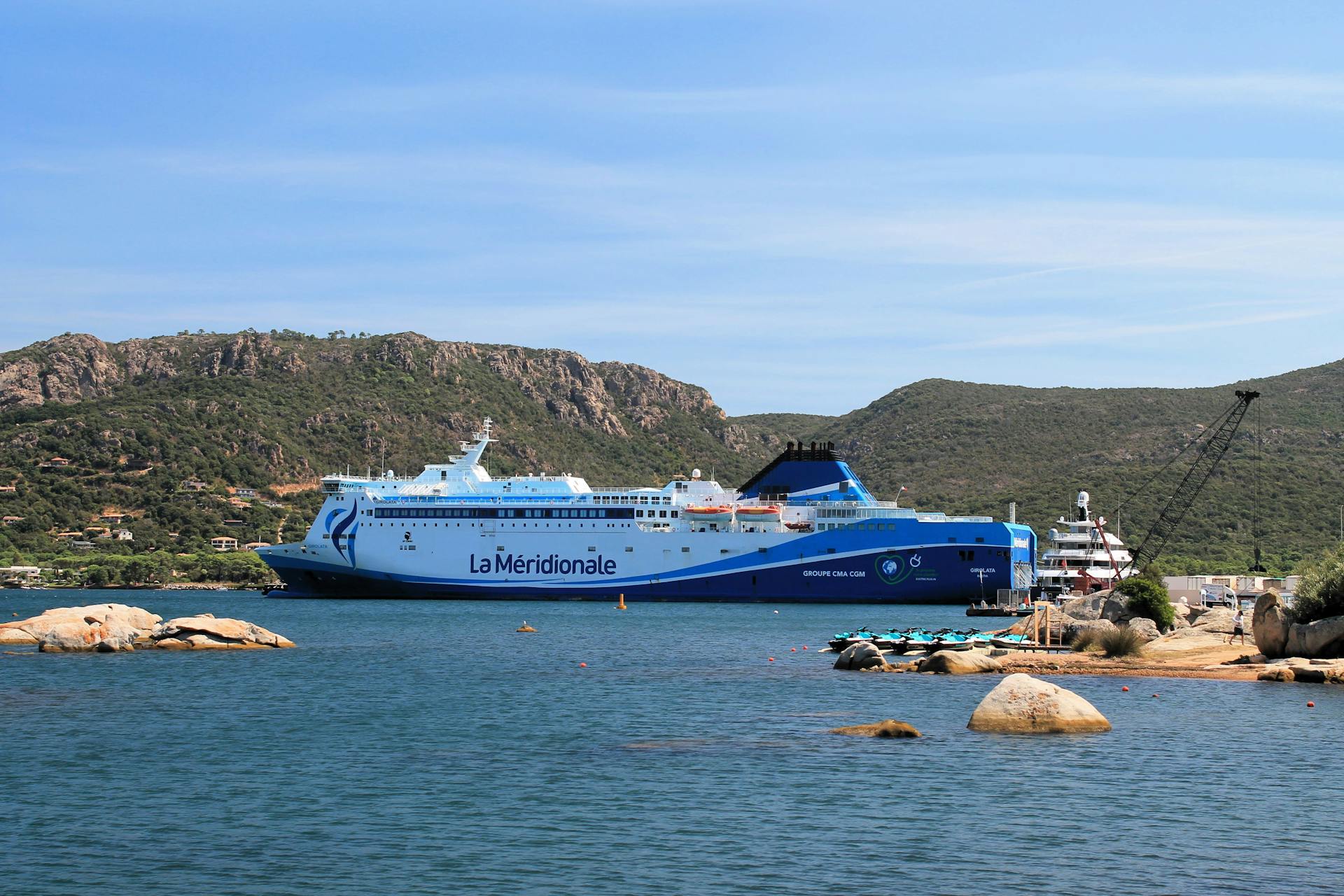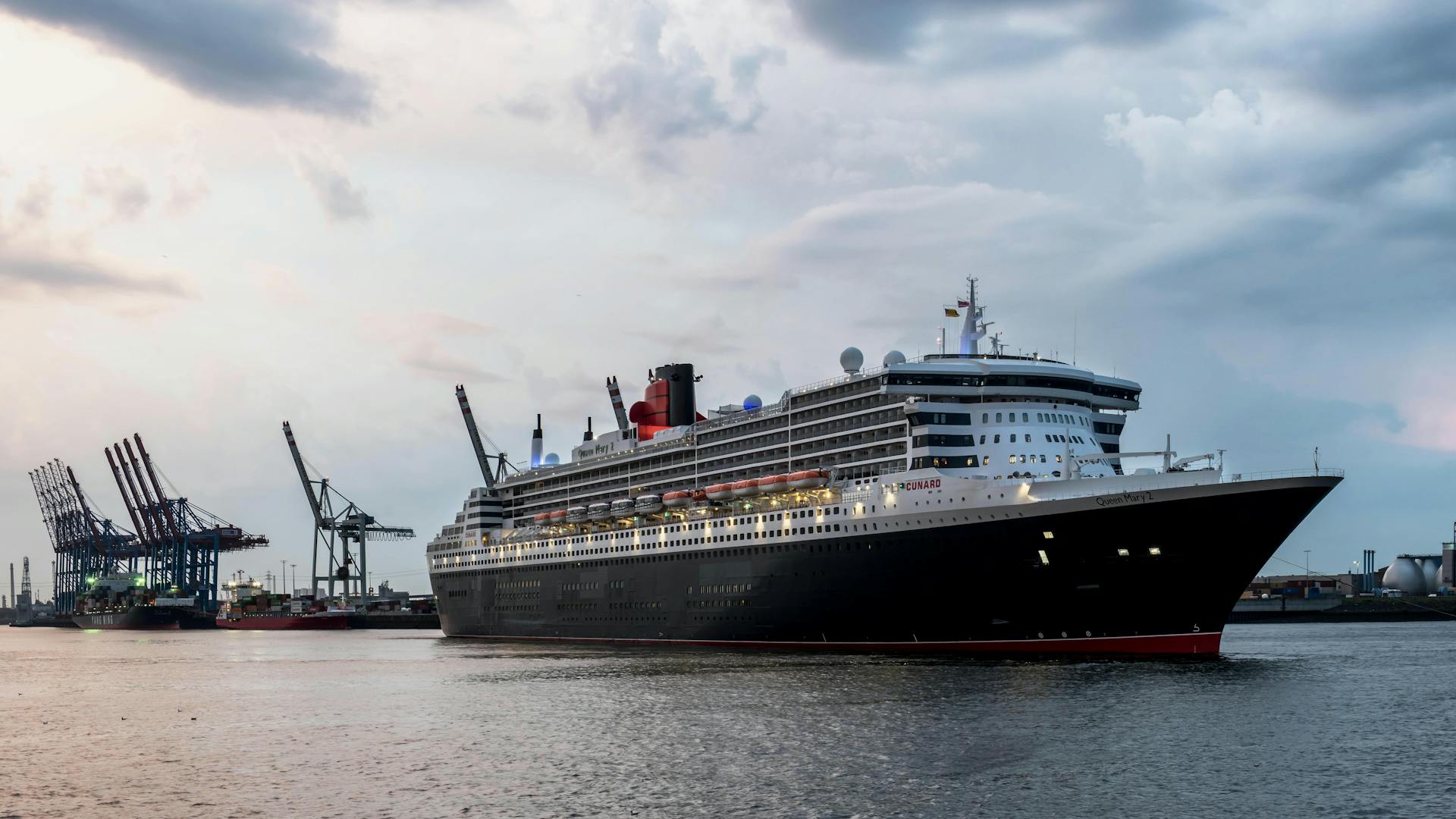
The RMS Queen Mary was a British-built ocean liner that was constructed at the John Brown & Co Ltd shipyard in Clydebank, Scotland. The ship was 1,019 feet long and had a gross tonnage of 80,700 tons.
Built to be the flagship of the Cunard-White Star Line, the Queen Mary was designed to be luxurious and spacious, with a top speed of 28.5 knots. She was the largest ship in the world at the time of her launch in 1934.
The Queen Mary had a long and storied history, serving as a passenger liner during World War II and later being converted into a troop ship. After the war, she was refitted as a passenger liner and continued to serve in this capacity until her retirement in 1967.
History of the Queen Mary
The RMS Queen Mary has a rich and fascinating history that spans over seven decades. Constructed in Scotland by John Brown & Company, the ship's maiden voyage took place in May 1936.
She was built to be a luxurious passenger liner, featuring a grand Art Deco design with decor fashioned from over 50 different types of wood from around the globe. The Queen Mary's luxurious onboard amenities included two indoor swimming pools, a music studio, libraries, paddle tennis courts, and telephone service that could connect callers to anywhere in the world.
Her status as a passenger liner was short-lived, with the onset of World War II resulting in the ship's conversion to troopship for Allied soldiers. The Queen Mary transported over 2 million passengers and approximately 810,000 members of the military during World War II.
After the war, the ship resumed its passenger service, but the arrival of the jet age in the late 1950s led to a decrease in demand for sea travel, ultimately resulting in the Queen Mary's retirement in the late 1960s.
The Build
Construction on the RMS Queen Mary began on 27 December 1930 at John Brown & Company's shipyard on Clydeside.
The Queen Mary was originally known as Yard No. 534, but it wasn't until 1934 that work began again after a loan from the British government.
The ship was launched on 26 September 1934, a day that marked the end of a three-year hiatus in construction.
The Queen Mary had a gross tonnage of 81,237 and an overall length of 1,019 ft.
The ship was designed to accommodate a large number of passengers and crew, with space for 2,139 passengers and 1,101 crew members.
Luxurious amenities were a key feature of the Queen Mary's design, including five dining areas and lounges, two cocktail bars, and a grand ballroom.
Transatlantic Travel's Golden Age
The RMS Queen Mary is a rare survivor from a bygone age, a real-life representative of the grand historic liners that once sailed the Atlantic.
She channels the spirit of the Titanic, Olympic, Mauretania, and Queen Elizabeth, four ships that were sunk, destroyed, or lost to time.
The Queen Mary carried and thrilled over 2.2 million passengers during peacetime, a testament to her enduring appeal.
Walking the panelled corridors and observing the sumptuous fittings of the Queen Mary is like stepping back in time to the era of glamorous transatlantic travel.
The ex-Cunard flagship stands tall as a physical history lesson, educating and enthralling visitors regardless of their age.
Famous Features
The RMS Queen Mary has some amazing features that make it stand out. One of the most impressive is its massive size, measuring over 1,019 feet in length and 118 feet in width.
The ship's speed is also noteworthy, reaching a top speed of 28 knots. This allowed it to be one of the fastest passenger ships in the world at the time.
With a gross tonnage of over 80,000 tons, the Queen Mary is an enormous vessel.
Claim to Fame
The Queen Mary was known to have hosted a range of famous guests from presidents and prime ministers to royalty and Hollywood stars. Guests included the Duke and Duchess of Windsor, Edward VIII and Wallis Simpson, Winston Churchill, Elizabeth Taylor, and Fred Astaire.
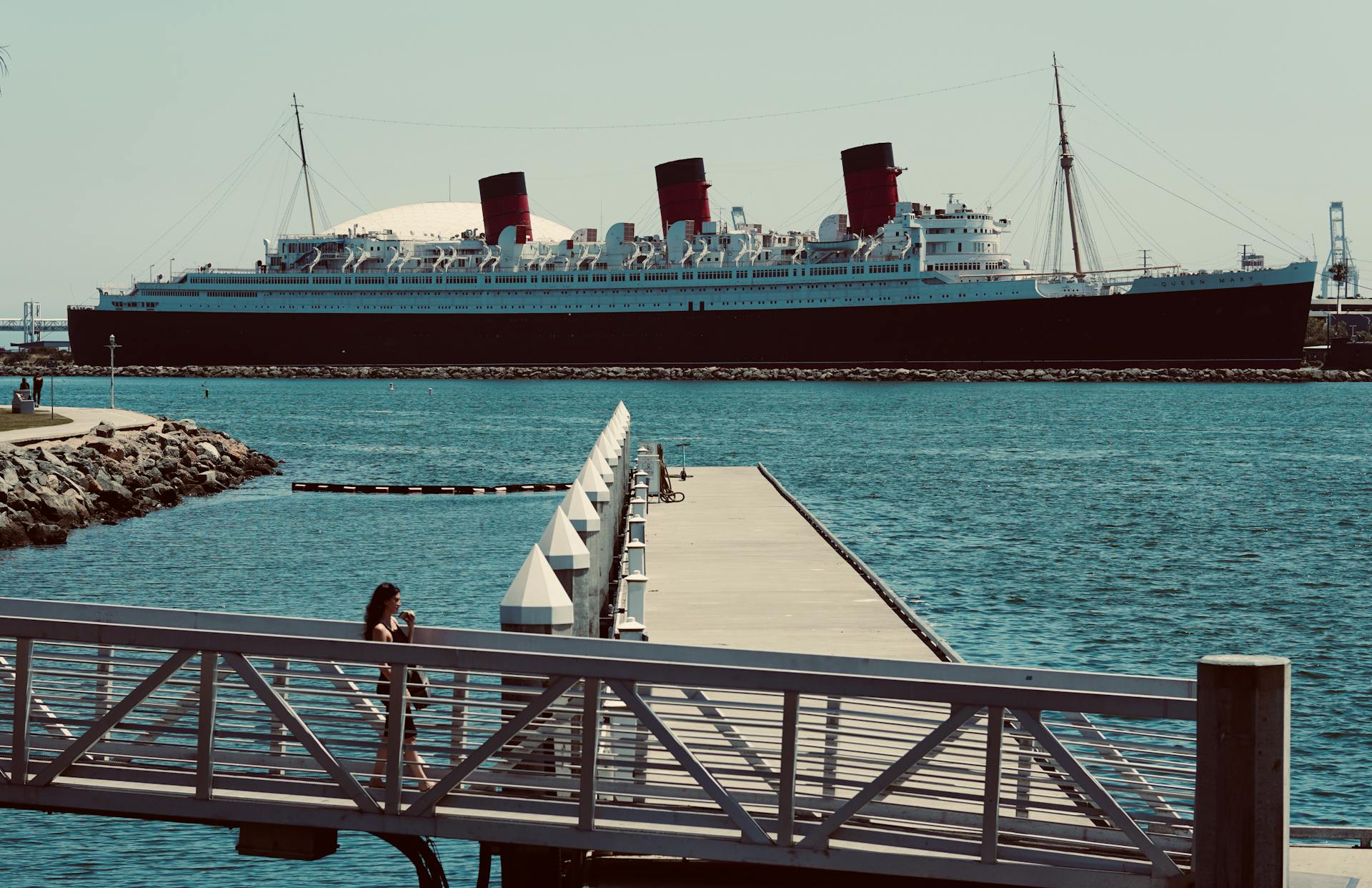
The Queen Mary was regarded as one of the most elegant and sophisticated ocean liners of her time. It's no surprise that it attracted such a high-profile clientele.
Guests like Winston Churchill and Elizabeth Taylor must have felt right at home on the Queen Mary, given its reputation for luxury and refinement.
What Nickname Did They Have?
The RMS Queen Mary was nicknamed 'The Grey Ghost' due to the grey camouflage paint job it received during the Second World War. This nickname stuck, and it's still remembered today as a testament to the ship's unique history.
The Queen Mary was a ship like no other, with a storied past that's fascinating to learn about.
Specifications and Size
The RMS Queen Mary was a massive ship, measuring 1020 ft (310.7 m) in length overall, which is roughly the length of 3 football fields laid end to end. Its width was 118 ft (35.6 m), and its height was 181 ft (55.2 m).

The Queen Mary had a significant draft of 39 ft (12 m), which is the distance between the ship's hull and the waterline. This was necessary to accommodate its massive size and weight.
The Queen Mary's weight was substantial, with a gross tonnage of 81,237 GT and a rudder weight of 140t. Its propulsion system consisted of 1 quadruple screw, powered by 4 sets of Parsons steam turbines, which produced a combined power of 160,000 shp (119,300 kW).
The Queen Mary's engines were incredibly powerful, producing 160,000 horsepower. This allowed the ship to reach a normal service speed of 28.5 kn (33.4 mph, 53.7 kmph).
Here's a summary of the Queen Mary's key dimensions:
Propulsion and Power
The RMS Queen Mary's power train was a marvel of engineering, comprising a complex system of machinery rooms that powered the ship's propulsion, electrical systems, and other essential services.
The "Power Train" rooms, located on the lower 5 decks of the ship, included 4 boiler rooms, each equipped with 6 "Yarrow" steam boilers, as well as an auxiliary boiler room, 2 electrical turbo generator rooms, 2 engine rooms, a water softening plant, a shaft alley, and a steering gear room.
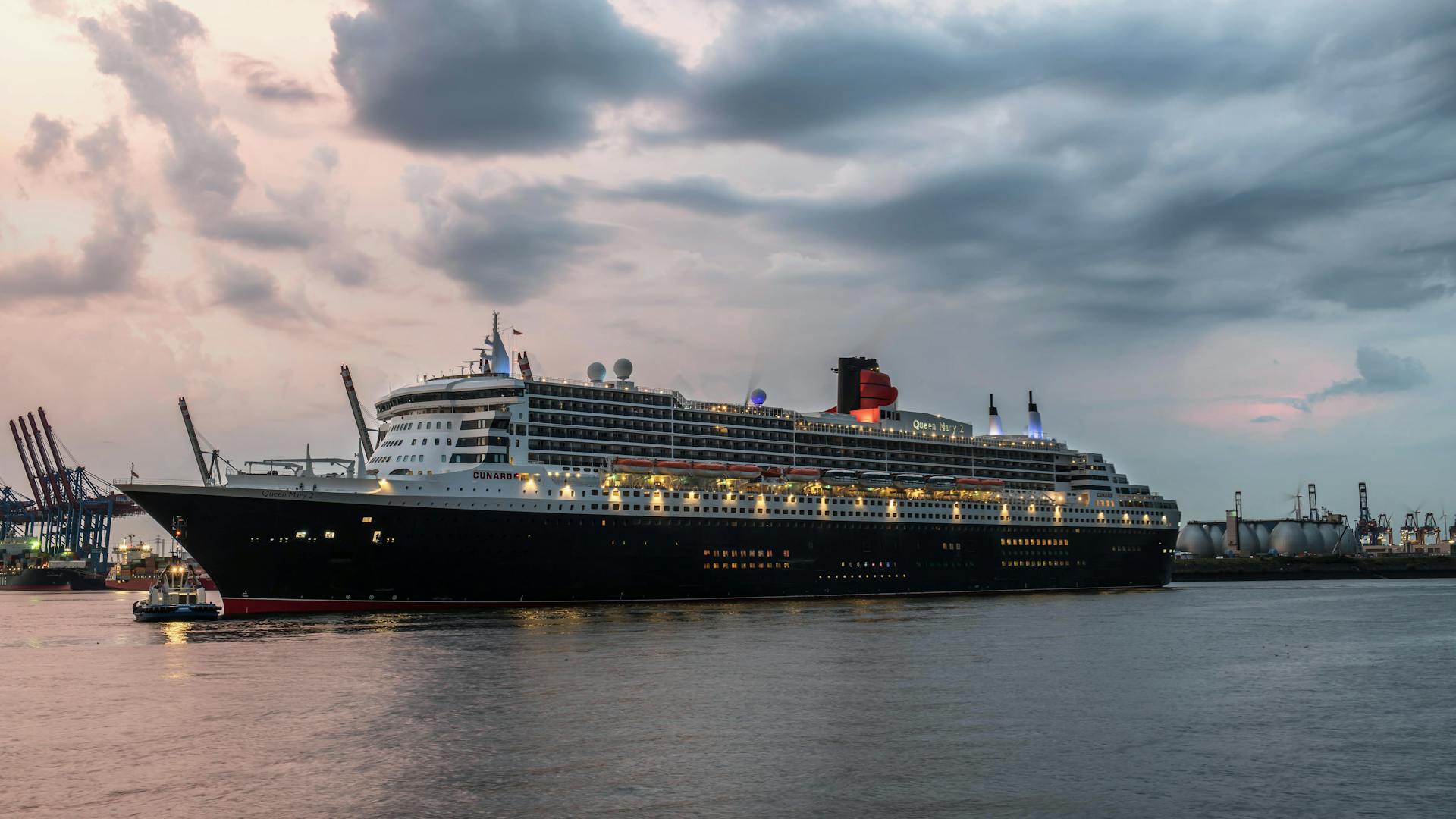
The ship's propulsion system was a quadruple screw design, powered by 4 sets of Parsons steam turbines, which produced a combined 160,000 horsepower.
Here's a breakdown of the main components of the power train:
- 4 boiler rooms with 6 "Yarrow" steam boilers each
- 1 auxiliary boiler room with 3 "Scotch" steam boilers
- 2 electrical turbo generator rooms
- 2 engine rooms for the ship's propulsion units
- 1 water softening plant
- 1 Shaft Alley for the 4 shafts connecting the ship's steam turbines with the propellers
- 1 Steering Gear Room with a hydraulic system for the ship's rudder and emergency steering wheel
The Queen Mary's power train was so impressive that it allowed the ship to hold the Blue Riband for the fastest Transatlantic crossing for many years.
Legacy and Impact
The RMS Queen Mary is an iconic ship with a lasting impact on the world of maritime history. She was launched in 1934 and was one of the largest ships in the world at the time.
Her impressive size and luxurious amenities made her a favorite among passengers, who enjoyed the ship's elaborate dining rooms, spacious cabins, and entertainment options. The Queen Mary was known for its speed, reaching a top speed of 28.5 knots.
After World War II, the Queen Mary was converted into a troop ship and played a crucial role in the war effort, transporting thousands of soldiers across the globe. This period in her history marked a significant shift from her original purpose as a luxury liner.
Exemplary War Service
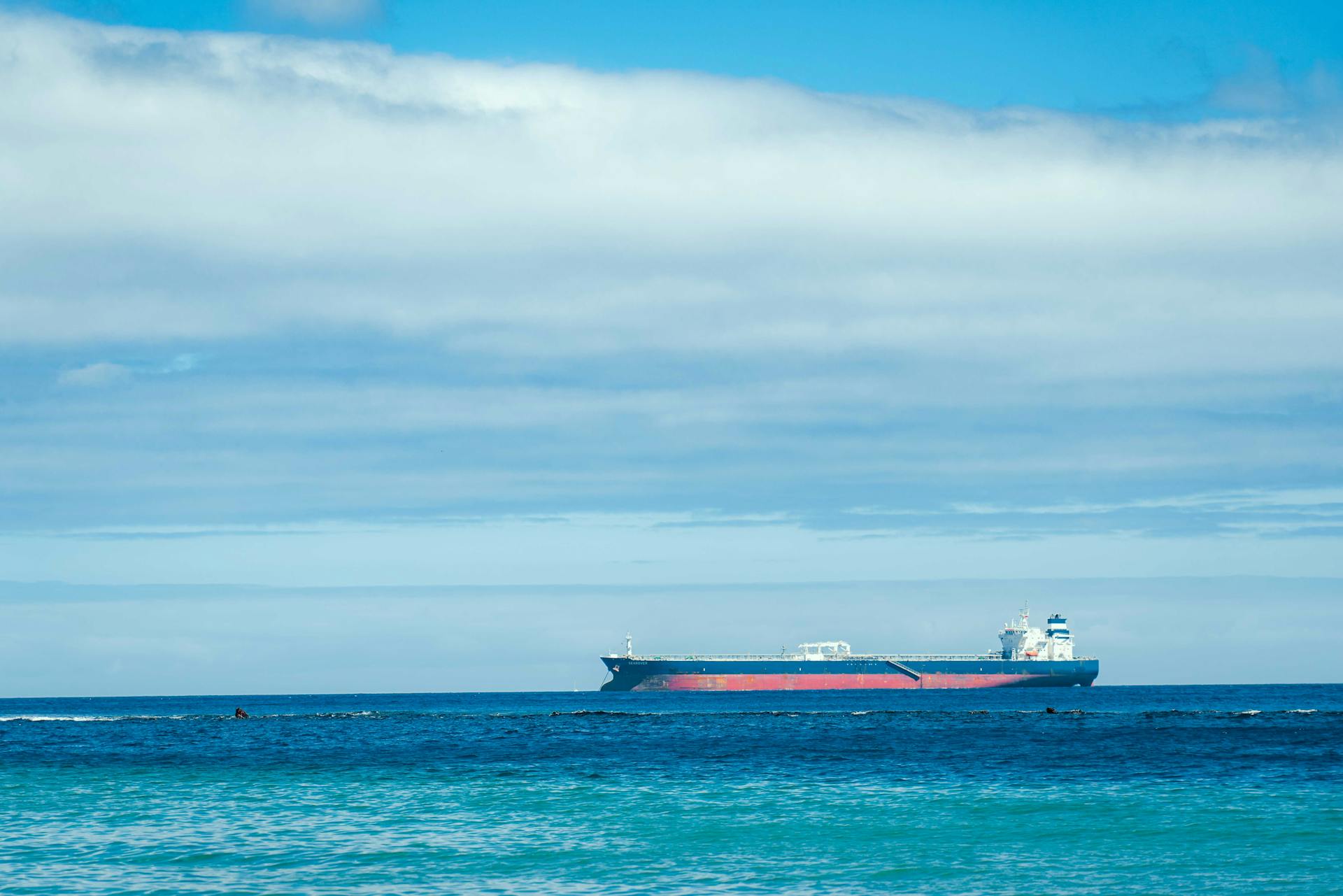
RMS Queen Mary delivered exemplary war service, transporting 810,000 military personnel over 600,000 miles.
She carried 16,683 people, a record that remains unbroken to this day, with 15,740 of them being troops.
Queen Mary's speed was her best defence, and she utilised it to the full, even when laden with thousands of soldiers.
Hitler offered a significant price for her capture, but Queen Mary proved elusive, completing 72 transatlantic crossings without enemy engagement.
In 1943, Queen Mary set the record for the highest number of passengers carried aboard a ship, a feat that still impresses today.
She was the favoured transport of British Prime Minister Winston Churchill, who travelled extensively on the ship during the war.
Churchill valued Queen Mary's luxury appointments and superior wartime speed of 30 knots, which won him over despite his initial reservations about the sea.
Queen Mary played a crucial role in planning the D-day landings, with Churchill using a scale replica of the Normandy coastline in his bathtub to plan the invasion.
Churchill signed the D-day declaration on board Queen Mary, marking the start of the largest military invasion in history.
Last Great Cruise: A Social and Historic Event
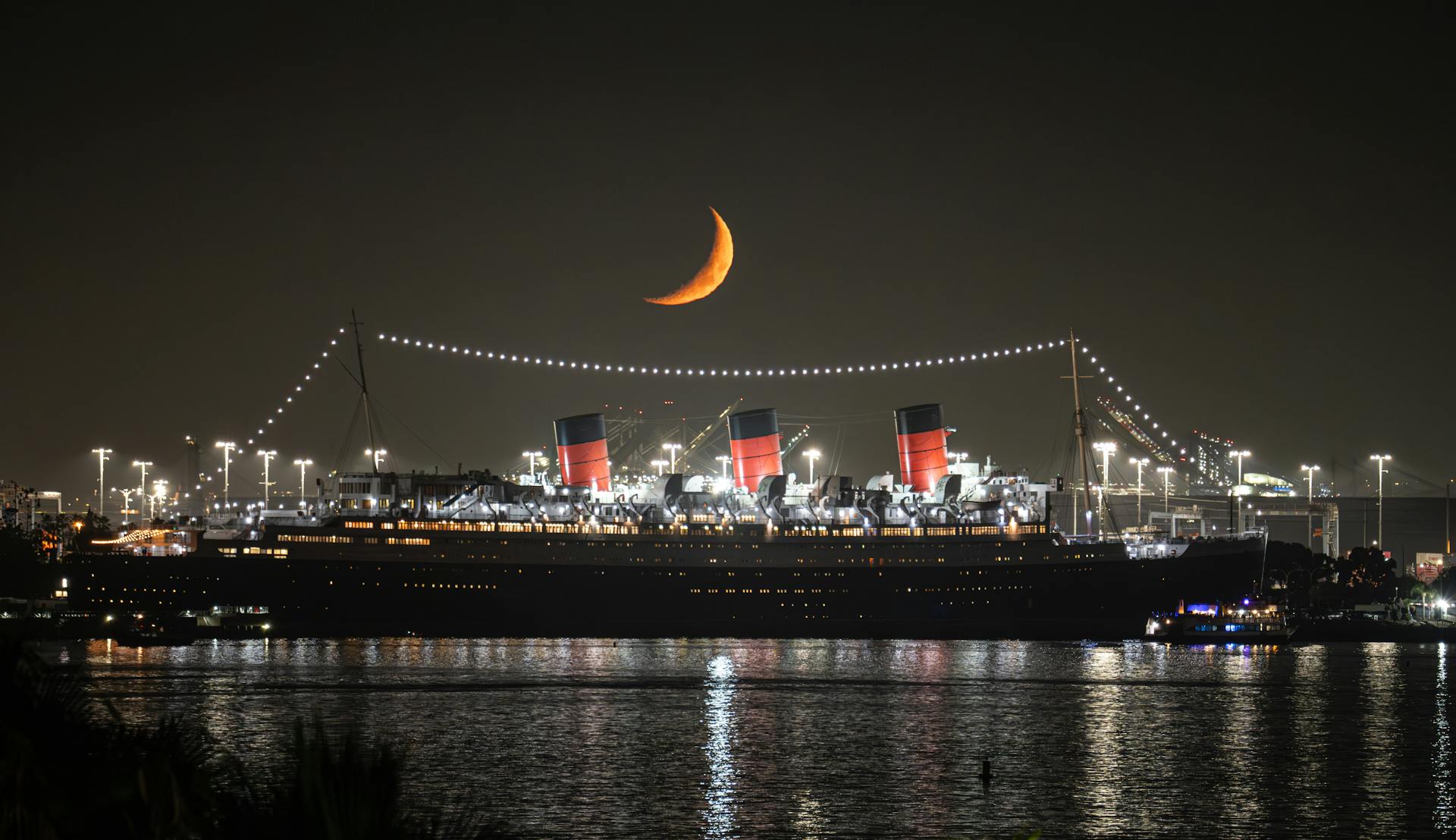
The Last Great Cruise was a remarkable event that marked the end of an era. It was a social and historic phenomenon that brought together over 600 people, including royalty, politicians, and celebrities.
The cruise was a grand affair, with luxurious amenities and entertainment on board. The SS United States, a state-of-the-art ocean liner, was the perfect vessel for this occasion.
The event was a farewell to the golden age of ocean travel, which was characterized by opulence and extravagance. The Last Great Cruise was a celebration of this era's excesses and grandeur.
The SS United States was a symbol of American ingenuity and engineering, capable of reaching speeds of up to 35 knots. It was a fitting vessel for this historic event.
The Last Great Cruise was also a social commentary on the changing times. It highlighted the decline of the old aristocracy and the rise of a new, more egalitarian society.
Fun Facts and Trivia
The RMS Queen Mary has an incredible history, and I'm excited to share some fun facts and trivia with you. Here are a few of my favorites:
The Queen Mary holds the world record for the most passengers ever transported on one vessel, with an impressive 16,683 people on board.
She made headlines in 1938 when she successfully docked without the assistance of tug boats, earning her a spot on the front page of the New York Times.
The Queen Mary was the first ocean liner to have a Jewish prayer room, showing just how inclusive and welcoming she was.
During World War II, she earned the nickname of the "Grey Ghost" due to her battleship gray paint job, which helped her blend in with the surrounding waters.
She's also known as the "Ship of Woods" because of the vast number of different woods used throughout the ship, sourced from all around the globe.
You might be interested to know that the Queen Mary has been featured in a film, specifically in the 1966 movie Assault on a Queen starring Frank Sinatra.
Here's a quick rundown of some of her notable nicknames:
- "Grey Ghost" (World War II battleship gray paint job)
- "Ship of Woods" (vast number of different woods used throughout the ship)
Hotel and Travel
The Queen Mary offers over 300 original first-class staterooms that have been carefully preserved to give guests a glimpse into what accommodations were like on an ocean liner in the mid-20th century.
These staterooms are complete with functioning portholes and original artwork, providing a unique experience for travelers. Room options range from full suites to standard staterooms, with various amenities and price points to suit different needs.
Visits Support Ship Viability
Visits to the Queen Mary support the ship's viability and conservation. This is because all sales, whether it's a day-ticket or an annual visitor membership, contribute to keeping this transatlantic icon alive.
Healthy visitor numbers give justification to the venue's long-term plans and overall viability. By being present on the Queen Mary, you help ensure future generations get to discover the best of maritime engineering and the glory days of transatlantic travel.
She set unmatched standards in shipping refinement. Queen Mary transported the big names of her time as well as several members of the Royal Family.
She has won hearts all over the world. She has touched millions with her grace.
Hotel
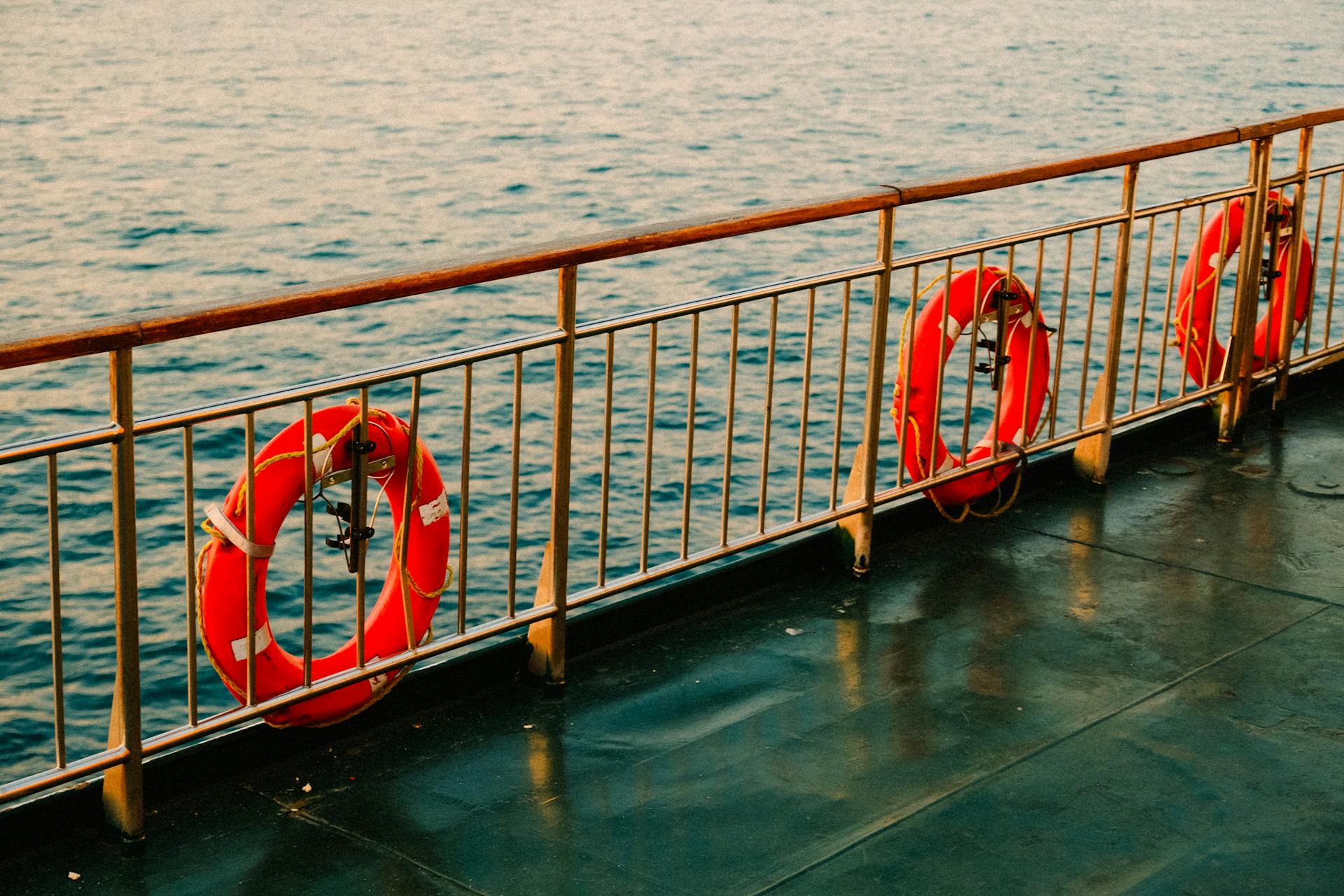
The Queen Mary hotel in southern California is a historic and unique accommodation. It offers over 300 original first class staterooms.
Each room is carefully preserved to give guests a glimpse into what first class accommodations were like on an ocean liner in the mid-20th century. You can even find functioning portholes and original artwork in some of the rooms.
Room options range from full suites with a private room and breakfast nook to deluxe staterooms that blend Art Deco elements with modern amenities.
Family staterooms, standard staterooms, and mini suites are also available.
British Royalty
The Queen Mary played a significant role in transporting British Royalty during its time.
Winston Churchill was a frequent traveler on the Queen Mary, visiting the ship three times during WWII. He even considered it his headquarters at sea.
Churchill signed the D-Day Declaration onboard the Queen Mary, highlighting the ship's importance in World War II.
The Queen Mother returned from a visit to the U.S. aboard the Queen Mary on November 18 - 23, 1954.
Frequently Asked Questions
What happened in room 474 on Queen Mary?
A tragic event occurred in Room B-474 on the Queen Mary, where a young family was brutally murdered, leaving behind a haunting legacy.
How many people died on the RMS Queen Mary?
57 people lost their lives on the RMS Queen Mary during its time as a luxury ocean liner
Sources
- https://www.visitlongbeach.com/things-to-do/attractions/the-queen-mary/
- https://www.nautilusint.org/en/news-insight/ships-of-the-past/2021/june/rms-queen-mary/
- https://www.queenmary.com/famous-people.htm
- https://www.worldofcruising.co.uk/advice/why-visit-queen-mary-long-beach
- http://www.queenmarycruises.net/rms-queen-mary/
Featured Images: pexels.com

